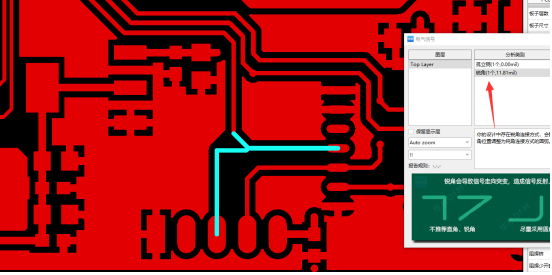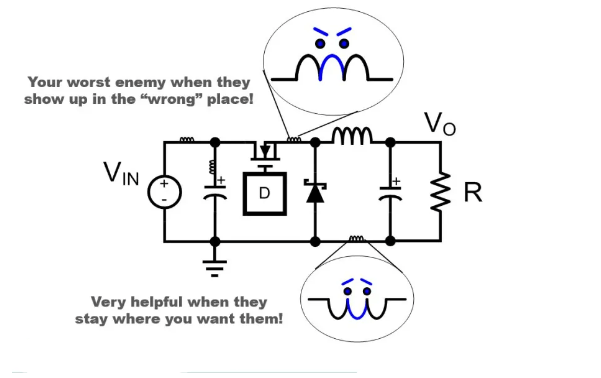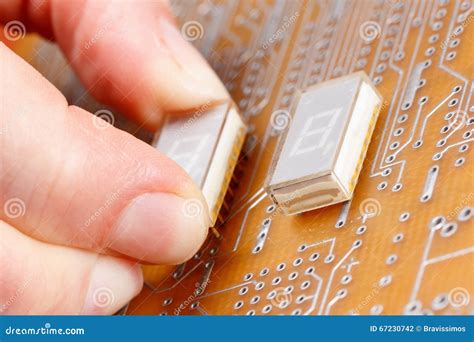Copper clad laminate
Proofing starts from 5 yuan. Copper clad laminate is the substrate for processing and manufacturing PCB. It is the most important type of material. The manufacturing process of the clad laminate is to impregnate glass fiber cloth, glass fiber felt, paper and other reinforcing materials with epoxy resin, phenolic resin and other adhesives, dry them at an appropriate temperature to a stage, and obtain pre-impregnated materials (referred to as impregnated materials), and then laminate them with copper foil according to process requirements, and heat and pressurize them on a laminator to obtain the required copper clad laminate.
In addition to supporting various components in PCB boards, copper clad laminates can also achieve electrical connections or electrical insulation between them.

1.Classification of copper clad laminates
Copper clad laminates are composed of three parts: copper foil, reinforcing materials, and adhesives. Boards are usually classified according to the type of reinforcing materials and adhesives or board characteristics.
(1)Classification by reinforcing materials
The most commonly used reinforcing materials for copper-clad laminates are alkali-free (alkali metal oxide content does not exceed 0.5%) glass fiber products (such as glass cloth, glass felt) or paper (such as wood pulp paper, bleached wood pulp paper, cotton linter paper), etc. Therefore, copper-clad laminates can be divided into two categories: glass cloth-based and paper-based.
(2)Classification by adhesive type
The adhesives used in foil-clad laminates are mainly phenolic, epoxy, polyester, polyimide, polytetrafluoroethylene resin, etc. Therefore, foil-clad laminates are also divided into phenolic, epoxy, polyester, polyimide, and polytetrafluoroethylene foil-clad laminates.
(3)Classification by substrate characteristics and uses
According to the degree of combustion of the substrate in the flame and after leaving the fire source, it can be divided into general-purpose and self-extinguishing types; according to the degree of bending of the substrate, it can be divided into rigid and flexible foil-clad laminates; according to the working temperature and working environment conditions of the substrate, it can be divided into heat-resistant, radiation-resistant, and high-frequency foil-clad laminates. In addition, there are foil-clad boards used in special occasions, such as prefabricated inner foil-clad boards, metal-based foil-clad boards, and foil-clad boards that can be divided into copper foil, nickel foil, silver foil, aluminum foil, copper foil, and beryllium copper foil according to the type of foil.
(4)Commonly used foil-clad board models
According to GB4721-1984, copper-clad laminates are generally represented by a combination of five English letters: the first letter C represents the copper foil, and the second and third letters represent the adhesive resin selected for the substrate. For example: PE represents phenolic; EP represents epoxy; uP represents unsaturated polyester; SI represents silicone; TF represents polytetrafluoroethylene and I represents polyimide. The fourth and fifth letters represent the reinforcing materials selected for the substrate. For example: CP represents cellulose fiber paper; GC represents alkali-free glass fiber cloth; GM represents alkali-free glass fiber felt.
If the inner core of the substrate of the foil-clad board is reinforced with fiber paper and cellulose, and alkali-free glass cloth is attached to both sides, G can be added after CP.
The two digits to the right of the horizontal line in the model number represent the product number of the same type but different performance. For example, the copper-clad phenolic paper laminate is numbered O1~20, the copper-clad epoxy paper laminate is numbered 21~30; the copper-clad epoxy glass cloth laminate is numbered 31~40.
If the letter F is added after the product number, it means that the foil-clad board is self-extinguishing.
2.Manufacturing method of copper-clad laminate
The manufacturing of copper-clad laminate mainly includes three steps: resin solution preparation, reinforcing material dipping and pressing.
(1)Main raw materials for manufacturing copper-clad laminate
The main raw materials for manufacturing copper-clad laminate are resin, paper, glass cloth and copper foil.
a. Resin
The resins used for copper-clad laminate include phenolic, epoxy, polyester, polyimide, etc. Among them, phenolic resin and epoxy resin are used in the largest amount.
Phenolic resin is a type of resin formed by condensation of phenols and aldehydes in acidic or alkaline media. Among them, the resin obtained by polycondensation of phenol and formaldehyde in an alkaline medium is the main raw material for paper-based foil-clad laminates. In the manufacture of paper-based foil-clad laminates, in order to obtain various excellent performance sheets, it is often necessary to modify the phenolic resin in various ways and strictly control the free phenol and volatile content of the resin to ensure that the sheets do not delaminate or bubble under thermal shock.
Epoxy resin is the main raw material for glass cloth-based foil-clad laminates. It has excellent bonding properties and electrical and physical properties. The more commonly used ones are E-20, E-44, E-51 and self-extinguishing E-20 and E-25. In order to improve the transparency of the foil-clad laminate substrate and to detect graphic defects in the production of printed boards, the epoxy resin is required to have a lighter color.
b.Impregnated paper
Commonly used impregnated papers include cotton linter paper, wood pulp paper and bleached wood pulp paper. Cotton linter paper is made of cotton fibers with shorter fibers. Its characteristics are good resin permeability and good punching and electrical properties of the resulting sheets. Wood pulp paper is mainly made of wood fiber. It is generally cheaper than cotton linter paper, but has higher mechanical strength. The use of bleached wood pulp paper can improve the appearance of the board.
In order to improve the performance of the board, the thickness deviation, standard weight, breaking strength and water absorption of the impregnated paper need to be guaranteed.
c.Alkali-free glass cloth
Alkali-free glass cloth is a reinforcing material for glass cloth-based foil-clad boards. For special high-frequency applications, quartz glass cloth can be used.
For the alkali content of alkali-free glass cloth (expressed as Na20), the IEC standard stipulates that it shall not exceed 1%, the JIS standard R3413-1978 stipulates that it shall not exceed 0.8%, the former Soviet Union TOCT5937-68 standard stipulates that it shall not exceed 0.5%, and the Ministry of Construction of my country standard JC-170-80 stipulates that it shall not exceed 0.5%.
In order to meet the needs of general-purpose, thin and multi-layer printed circuit boards, the glass cloth models used for foil-clad boards abroad have been serialized. Its thickness range is 0.025~0.234mm. Specially required glass cloth is post-processed by coupling. In order to improve the mechanical processing performance of epoxy glass cloth-based foil-clad laminates and reduce the cost of the laminates, non-woven glass fiber (also known as glass felt) has been developed in recent years.
d. Copper foil
The foil material of the foil-clad laminate can be copper, nickel, aluminum and other metal foils. However, based on the conductivity, solderability, elongation, adhesion to the substrate and price of the metal foil, copper foil is the most suitable except for special uses.
Copper foil can be divided into rolled copper foil and electrolytic copper foil. Rolled copper foil is mainly used in flexible printed circuits and other special uses. In the production of foil-clad laminates, electrolytic copper foil is widely used. For the purity of copper, both IEC-249-34 and my country’s standards stipulate that it must not be less than 99.8%.
At present, the thickness of copper foil used in domestic printed circuit boards is mostly 35um, and 50um copper foil is used as a transitional product. In the manufacture of high-precision hole metallized double-sided or multi-layer boards, it is hoped that copper foil thinner than 35um, such as 18um, 9um and 5um, is used. Some multi-layer boards use thicker copper foils for the inner layer of the foil-clad boards, such as 70um.
In order to improve the bonding strength of copper foil to the substrate, oxidized copper foil (that is, after oxidation treatment, a layer of copper oxide or cuprous oxide is generated on the surface of the copper foil, and the bonding strength between the copper foil and the substrate is improved due to the polarity effect) or roughened copper foil (an electrochemical method is used to generate a roughening layer on the surface of the copper foil, which increases the surface area of the copper foil, and the anchoring effect of the roughening layer on the substrate improves the bonding strength between the copper foil and the substrate). In order to avoid the copper oxide powder from falling off and moving to the substrate, the surface treatment method of the copper foil is also constantly improved. For example, TW type copper foil is a thin layer of zinc plated on the roughened surface of the copper foil, and the surface of the copper foil is gray; TC type copper foil is a thin layer of copper-zinc alloy plated on the roughened surface of the copper foil, and the surface of the copper foil is golden yellow. After special treatment, the copper foil’s resistance to heat discoloration, oxidation resistance and cyanide resistance in printed circuit board manufacturing are correspondingly improved.
The surface of the copper foil should be smooth and free of obvious wrinkles, oxidation spots, scratches, pits, pits and stains. The porosity of copper foil of 305g/m2 and above requires no more than 8 penetration points within an area of 300ram×300mm; the total pore area of the copper foil on an area of 0.5m2 does not exceed the area of a circle with a diameter of 0.125mm. The porosity and pore size of copper foil below 305g/m2 shall be agreed upon by both the supply and demand parties. The unit area weight and thickness of the copper foil shall comply with the provisions of Table 2.1.
Before the copper foil is put into use, samples shall be taken for compression tests if necessary. The pressing test can show its peeling strength and general surface quality.

2.Manufacturing process of copper-clad laminate
The production process of copper-clad laminate is as follows:
Resin synthesis and glue solution preparation-reinforcement material dipping and drying-dipping material shearing and inspection-dipping material and copper foil lamination-hot pressing molding-cutting-inspection and packaging.
The synthesis and preparation of resin solution are carried out in the reactor. Most of the phenolic resins used for paper-based foil-clad laminates are synthesized by foil-clad laminate factories.
The production of glass cloth-based foil-clad laminates is to mix and dissolve the epoxy resin and curing agent provided by the raw material factory in acetone or dimethylformamide, ethylene glycol methyl ether, and stir to make it a uniform resin solution. The resin solution can be used for dipping after aging for 8 to 24 hours.
Dipping is carried out on a dipping machine. Dipping machines are divided into horizontal and vertical types. Horizontal dipping is mainly used for dipping paper, and vertical dipping machines are mainly used for dipping glass cloth with higher dipping strength. The paper or glass cloth impregnated with resin liquid is dried through the rubber squeeze roller and cut into a certain size. After passing the inspection, it is ready for use.
According to the product design requirements, the copper foil and the paper or glass cloth impregnated and dried are stacked and placed between two stainless steel plates with release film or release agent. The stacked layers and the steel plates are placed in a hydraulic press for pressing.
Qualified foil-clad boards should be packaged. A layer of low-sulfur isolation paper should be placed between each two double-sided foil-clad boards, and then packed in polyethylene plastic bags or wrapped with moisture-proof paper.







